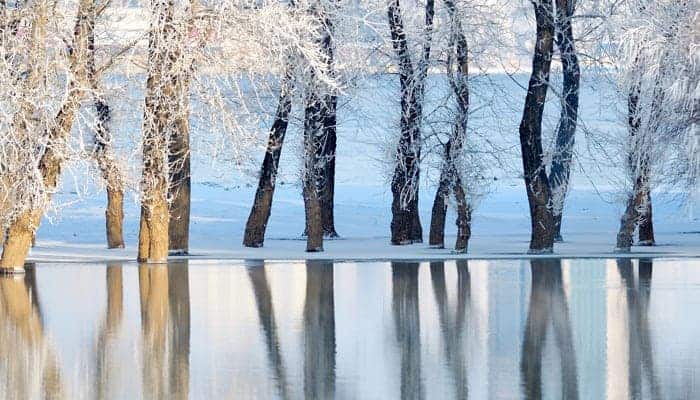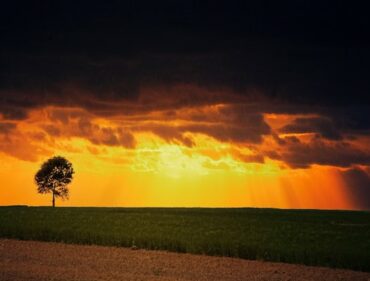Blog: Winter Solstice: A Long Winter’s Night
By Laura Chandler
The winter solstice occurs on the day of the year when the earth’s axial tilt is farthest from the sun. Simply put, it is the shortest day of the year. It marks that point in time when the shortening of days changes and then begin to lengthen until the Summer Solstice, June 21st, when they shorten again, like the waxing and waning of the moon. Most westerners are not aware of this phenomenon of the sun. In fact, we are rarely attuned to the rhythm of the sky. Instead, we are focused on the gathering speed brought by the holidays. Caught up in the rush of holiday shopping, event planning and travel, we move counter to the rhythm of the natural world around us, and counter to our own internal clocks. This can cause stress, anxiety, and restlessness. The event of winter solstice has long been recognized with celebrations and rituals throughout the world. There are even structures devoted to the solstice dating back to the Neolithic Age, that suggest these ancient people understood something about this time of year that we have clearly forgotten.
It is no coincidence that the winter solstice, on December 21st, falls so close to Christmas, on December 25th. Rome chose this date for Christ’s birth in the fourth century, after many centuries of date changes ranging from January to April. And even now, some Orthodox churches celebrate Christmas in January. The date chosen for Christmas coincided with several winter festivals observed across the Roman Empire that included Winter Solstice, Yule and Saturnalia. Different aspects of these appear to have been absorbed into the Christian celebration of Christmas. For example, Saturnalia was the Roman mid-winter holiday that involved a great festival. People decorated the halls of their homes with boughs of laurel (“deck the halls”) and evergreen trees, which symbolized the continuity of life. In Scandinavia, the Yule winter festival involved burning Yule logs, telling stories, and drinking mead around bonfires. Mistletoe was cut and hung above doorways for good luck. Mistletoe, it is interesting to note, was considered sacred by the Druids. Winter Solstice celebrations were not limited to Europe. There are many accounts of observances of this sort from Native American tribes, in North and South America, to China, and even in Iran with the observance of Yalda.
Yet, these winter festivals are merely artifacts of even more ancient rituals and traditions dating back to Neolithic times some 10,000 years ago. All across the ancient world, megalithic structures from this time period were built to align with the solstices and equinoxes. Some even tracked other celestial bodies like the moon and Venus. There are sites in Asia, Indonesia, North and South America, the Middle East, and Africa. It has even been hypothesized that the early Christian cathedrals contained solar observatories similar to those of the ancients that were used to accurately set the date for Easter.
Stonehenge is one of the better known of these structures. It has been shown to mark the summer and winter solstices. Newgrange, in Ireland, and Maes Howe, in Scotland, are both large enclosed circular structures with a long passageway, not unlike the birth canal attaching to the womb. At noon on the winter solstice in both locations a shaft of light travels down the canal and illuminates a point at the back of these structures, which are marked by a spiral. There is no mistaking the deliberateness of this construction indicating something very significant about the sun at Winter Solstice.
We can only speculate about what it meant to the ancients. Certainly there was a lot of long term planning and physical labor involved, since these structures were built over hundreds of years. And we really don’t know how these structures were used. They have long been described as tombs, but more recent thought includes the idea that they were places of ritual, perhaps a place where a simulation of death and rebirth occurs, much like the sun appears to do each year as it drives towards darkness and then miraculously reverses and brings more light each day.
The idea of resurrection is a provocative one. It is not new, of course, but still holds a significant place in our imaginations. Surely, our holiday celebrations contain some of what is left of the rituals of the ancients. Perhaps it is the outer shell of some greater understanding, a mystery to contemplate. Whatever the case, it seems that the very act of taking time out of our busy holiday schedules simply to think of the ancient origins of the holiday is a beneficial one. And if you find yourself with a little extra time on December 21st, consider meditating on your own resurrection cycle, what needs to be let go of and what needs to be reborn, as the sun once again sends that shaft of light down the long corridors of Newgrange and Maes Howe, signaling the end of a cycle and the start of a new one.
ENJOYING THE STREAM OF CONSCIOUSNESS BLOG? SIGN UP FOR FREE UPDATES!



